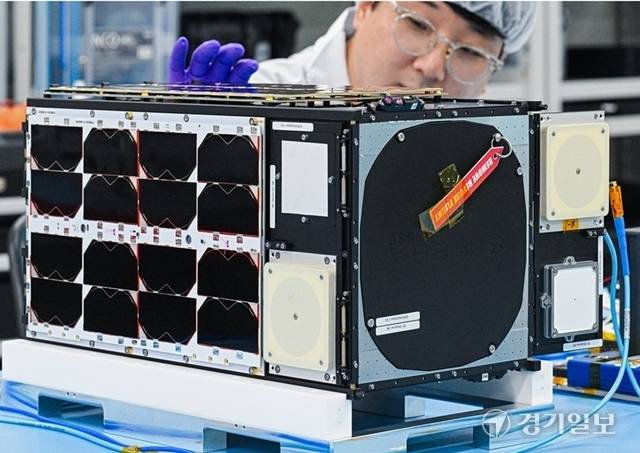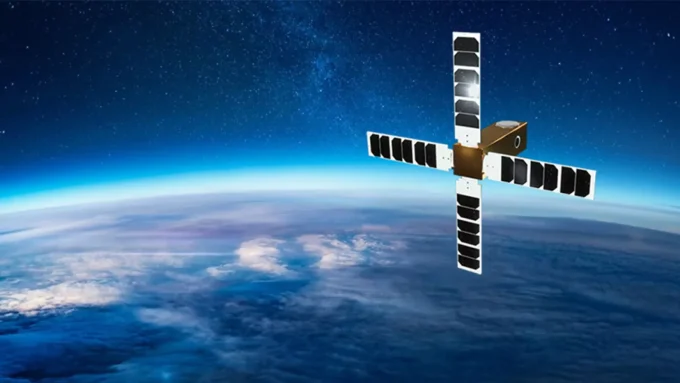Other news

What is Antenna Gain in Satellite Communications? (Explained simply)
Read more
Reflectarray Antennas for Small Satellites: From Concept to First Commercial Deployment
Read more
The N3SS (Nanosat 3U pour la Surveillance du Spectre in French) satellite represents a key development in the field of radiofrequency (RF) spectrum surveillance. Launched on October 7, 2023, from the Guiana Space Centre aboard a Vega rocket, N3SS is a testament to the growing use of nanosatellites for complex and crucial missions.
Weighing just 5 kg, this tiny satellite is designed to detect and localize interference in civilian communication systems, especially those that rely on satellite navigation such as GPS. Developed by the aerospace startup U-Space under the supervision of the French Space Agency (CNES), N3SS is a technological demonstrator that tests critical miniaturized technologies for future space missions.
Anywaves is proud to be a partner in this project, providing the antennas that enable N3SS to perform its mission effectively.
This case study marks the first anniversary of N3SS in orbit. We will explain the satellite’s mission objectives, the technological innovations it brings to the table, and how Anywaves’ advanced antennas contributed to N3SS success.

Vue d’artiste du nanosatellite NESS © CNES/OCTAVIA Loïc, 2023
N3SS serves as a demonstrator for advanced technologies in RF spectrum surveillance. Operating in the L band (1–2 GHz) and S band (2–4 GHz), it focuses on detecting and locating sources of RF interference. These frequency bands are crucial for applications like GPS, LTE networks, radar systems, and military communications. Any disruptions can pose significant security risks which is why it’s so important to develop effective monitoring systems.
A primary task of N3SS is to detect RF jamming signals that interfere with GPS-based systems. By providing data that helps authorities track and neutralize interference sources—whether intentional or accidental—the satellite plays a critical role in maintaining communication integrity. Orbiting at an altitude of 564 km in low Earth orbit (LEO), N3SS has wide-area coverage, enabling it to detect interference across various regions. The data collected are invaluable for spectrum management authorities, offering insights into the nature and location of disruptions.

Satellite Ness en salle blanche au CST – Crédits : © CNES/DE PRADA Thierry, 2022
N3SS is a 3U CubeSat, meaning it’s built from three cubic units, each measuring 10 cm on a side. This results in total dimensions of approximately 30 cm × 10 cm × 10 cm. Weighing under 5 kg, it’s both compact and efficient. The modular design of CubeSats allows for the integration of advanced instruments despite their small size, enabling rapid development and deployment at a lower cost compared to traditional satellites.
At the core of N3SS is the SPECTROLITE instrument, developed by Syrlinks, a company specializing in RF and microwave solutions for space applications. SPECTROLITE can detect signals across the L and S bands, essential for both military and civilian uses, including radar and GPS systems. This instrument enables N3SS to accurately detect jamming and interference signals, sending this data back to ground stations for analysis and response.
The satellite also carries a magnetometer to measure the Earth’s magnetic field, further enhancing its data collection capabilities.
Communication is crucial for any satellite mission, and N3SS’s success heavily depends on the quality and precision of its antennas. Anywaves is proud to have supplied two key components:

Le satellite Ness en salle blanche, au Cnes. © CNES / DE PRADA Thierry
On October 7th 2024, N3SS has celebrated its one year in orbit. Since its launch, it has proven its ability to continuously monitor the RF spectrum, detecting numerous instances of interference and jamming. Its position in LEO allows it to cover vast areas, collecting and analyzing data in near real-time. Throughout its first year, N3SS has provided valuable insights into how jamming affects GPS and communication systems. This data has helped authorities refine strategies for managing the RF spectrum and mitigating interference.
For instance, N3SS detected a series of unintended interferences originating from maritime communications in the Mediterranean. By supplying precise location data, the satellite enabled authorities to quickly identify and address the source of interference, minimizing disruptions to GPS services in the region.
The success of N3SS goes beyond technical achievements. The mission demonstrates that nanosatellites can effectively perform tasks traditionally reserved for larger, more expensive satellites. Its low cost and small size make it an ideal platform for RF spectrum monitoring, offering a scalable solution to global communication challenges. The potential for future missions to build on this success—perhaps through deploying constellations of nanosatellites—is promising.
The first year of the N3SS mission has shown the effectiveness of nanosatellites in RF spectrum surveillance. With support from CNES, U-Space, Syrlinks, and Anywaves, the mission has validated new technologies and underscored the importance of real-time spectrum monitoring from space. The use of 3D-printed antennas and advanced payloads like SPECTROLITE sets a new standard for future nanosatellite missions.
Entering its second year in orbit, N3SS will continue to supply data to enhance space-based communication security and prove that challenges in the RF spectrum can be met with innovative and effective solutions.



If you have any question, we would be happy to help you out.